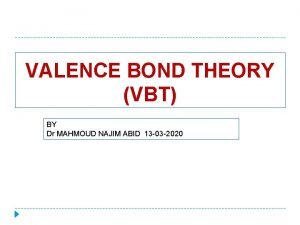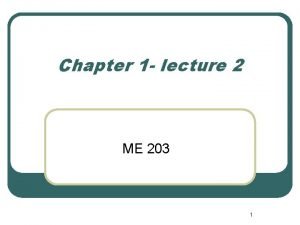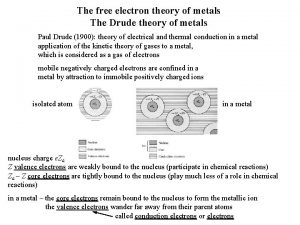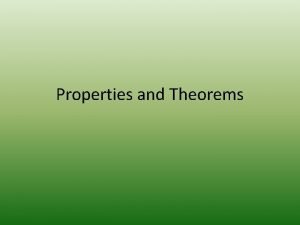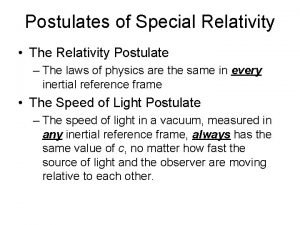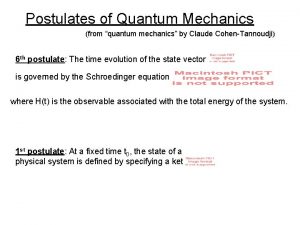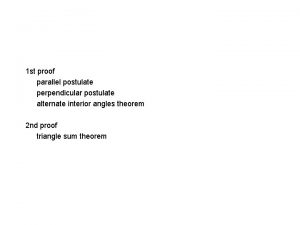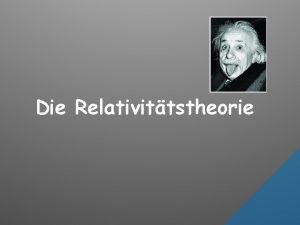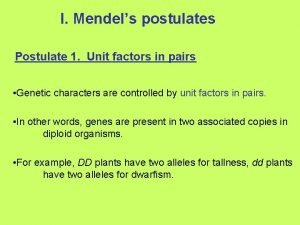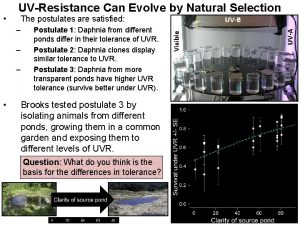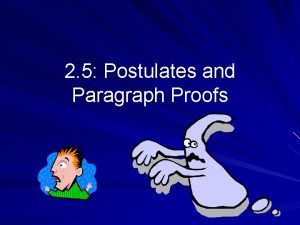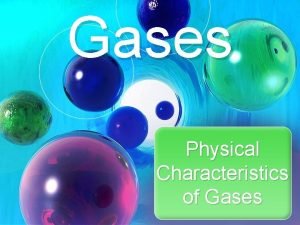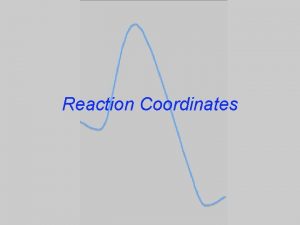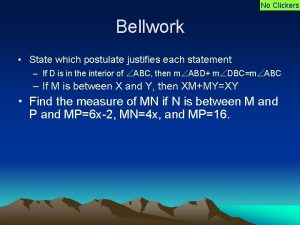Postulates Postulate 1 A physical state is represented












- Slides: 12

Postulates Postulate 1: A physical state is represented by a wavefunction The probablility to find the particle at within is . . Postulate 2: Physical quantities are represented by Hermitian operators acting on wavefunctions. Postulate 3: The evolution of a wavefunction is given by the Schrödinger equation. Postulate 4: The measurement of a quantity (operator A) can only give an eigenvalue an of A. Postulate 5: The probability to get an is measurement, the wavefunction collapes to eigenfunction). . After the (corresponding Postulate 6: N identical particles. The wavefunctions are either symmentrical (bosons) or antisymmetrical (fermions).

Orbital angular momentum + circ. perm. Commutation relations Eigenfunctions common to L 2, Lz Spherical harmonics integers Orthonormality Raising, lowering operators

One particle in a spherically symmetric potential H, L 2, Lz commute Eigenfunctions common to H, L 2, Lz Degeneracy Centrifugal potential Wavefunctions parity:

Angular momentum + circ. perm. Commutation relations Eigenfunctions common to J 2, Jz Integers or half-integers Addition of two angular momenta: Angular momentum Triangle rule L 2, Lz , S 2, Sz commute L 2, S 2, Jz commute Clebsch-Gordan coefficients

One particle in a spherically symmetric potential Eigenfunctions common to H, L 2, Lz , S 2, Sz L 2, S 2, Jz Eigenvalues Eigenfunctions common to H, Eigenvalues Also eigenfunctions to the spin-orbit interaction

Time-independent perturbation theory known ? Approximation ? Non-degenerate level Degenerate level (s times) First diagonalize H´ in the subspace corresponding to the degeneracy

Time-dependent perturbation theory known System in a at t=0 Probability to be in b at time t? Constant perturbation switched on at t=0 Continuum of final states with an energy distribution rb(E), width h Fermi’s Golden rule For

One particle in an electromagnetic field (I) Plane wave b a Absorption Line broadening Stimulated emission

One particle in an electromagnetic field (II) b Spectral intensity a Absorption Dipole approximation Selection rules Oscillator strength

One particle in a magnetic field Zeeman effect Paschen-Back effect Anomal Zeeman effect

One particle in an electric field Quadratic Stark effect (ground state) Linear Stark effect Tunnel ionisation

Many-electron atom Hc central field H 1 perturbation antisymmetrical/ permutation of two electrons Slater determinant Pauli principle Electon configuration, periodic system etc. . Wavefunctions common to Hc, L 2, Lz, S 2, Sz Beyond the central field approximation: LS coupling jj coupling 2 S+1 L terms
 Can you use the sss postulate or the sas postulate to prove
Can you use the sss postulate or the sas postulate to prove State the postulates of valence bond theory
State the postulates of valence bond theory S=sf+xsfg
S=sf+xsfg Quasi equilibrium
Quasi equilibrium State the postulate illustrated by the diagram
State the postulate illustrated by the diagram Free electron model of metals
Free electron model of metals 2 postulates of relativity
2 postulates of relativity Skew lines
Skew lines Chemistry
Chemistry List of theorems and postulates
List of theorems and postulates Postulate
Postulate Postulates of quantum mechanics
Postulates of quantum mechanics What is microbiology
What is microbiology

